The mighty but tamed Serra da Chela mountain range is surrounding me in the small village of Catanda. I lost 1000 meters of elevation since Lubango and I have to climb back these mountains I see around me. They have cliffs, some have rounded tops, they are very green and it’s so nice to be cycling here. The Serra da Chela is part of the Great Escarpment, just like the Drakensberg in South Africa. “Inside” the plateau, Johannesburg lies at 1600 m, Windhoek at 1700 m, Lubango as well. On the other side of the escarpment, the ocean.
There is only one small shop in Catanda and the bolinos (donuts) are not ready yet. Nothing to eat then. Despite the new houses built by the government for the villagers, who used to rebuild their village every time violent rains played against them, there are no water taps. They fetch it from the river. I go there too, but the stream is small and smells like animals … So I start my day with a stomach that won’t last long.

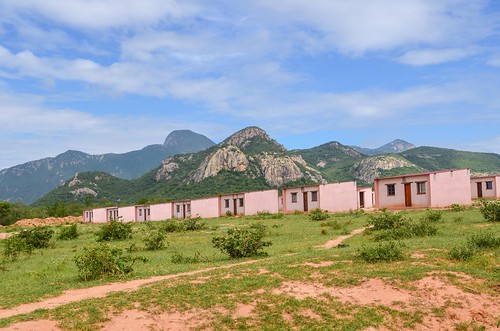
The brand new Chinese road winding lonely in the Serra da Chela has no traffic. Like for the railway, there is almost nothing between the towns of Namibe and Lubango. After the very bad roads I have been taking through Angola, it’s a right reward. And I can still cycle in the middle of the road. This is the Namibe province, the 7th of the 8 provinces I am crossing to reach Namibia. Angola has 18 provinces.
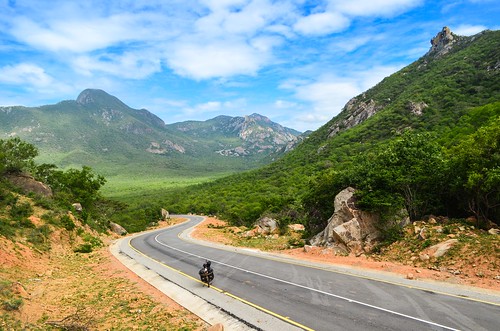
My first real surprise is these two topless girls walking by the road, their breasts strapped around their bodies. Okay, why not.
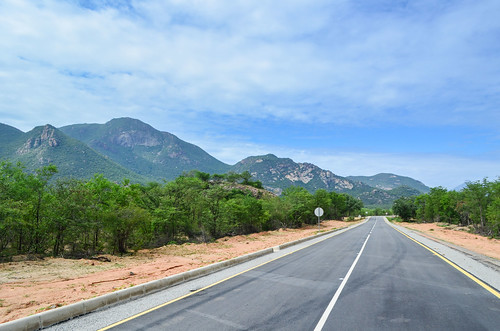
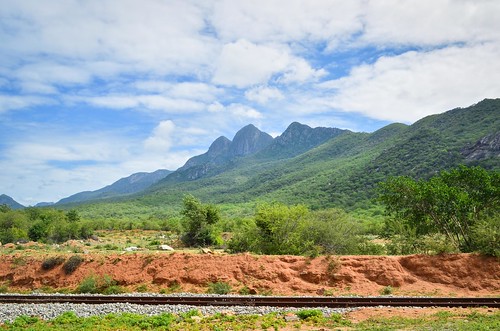
As there is no food in Garaganta, I continue until Assunção. There is only one man there, living in the ruins of the old train station of the caminho de ferro de Moçâmedes.
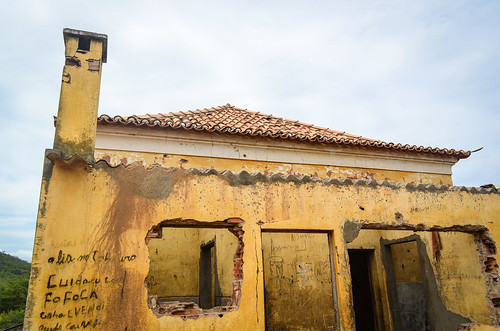
Gaby moved here from an eastern province during the civil war. He was fighting. He shows me a scar on his foot, the only “lucky” trace of his encounter with a landmine, who killed 18 other people in the vehicle he was riding. He gives me a bit of leftover funge.

The Huilá and Namibe province are located in the South of Angola. They were the theater of the conflict between the MPLA, backed by Cuban troops against the UNITA and South African troops. Just like with the tanks along the roads, it is not difficult to find oneself face to face with walls carrying the history of the civil war.

But History moves fast in Angola, and hopefully for the best. I bet this old building will disappear soon with its bullet impacts. The new Chinese railway has taken the place of the old Portuguese one. The new train station, already standing 500 m further, is not open yet.
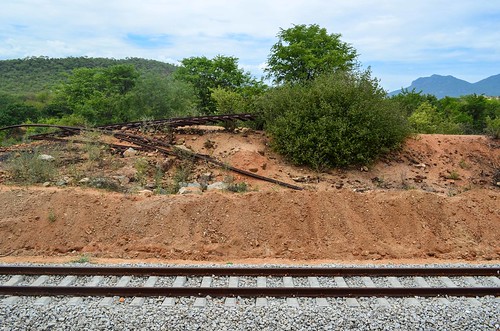

The next village is finally coming to assistance of my stomach. The small shop doesn’t sell anything but there is a lady making fresh donuts. She says it doesn’t rain anymore here, and it’s too dry: as a result, tomatoes don’t grow and animals are rare. That’s why they have to use flour and eat donuts. It sounds surprising, since it rained heavily in Lubango yesterday, 80 km away, and I saw many monkeys crossing the road in front of me. But it could also be that the rains are very localized, and that the monkeys come to the road because they can’t find food in the hills.
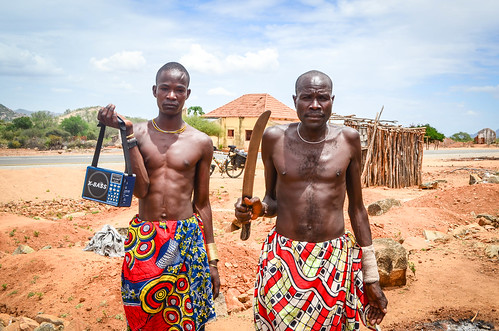
Most of the people here are topless and dressed traditionally. They are Mucubal. They are semi-nomadic people living between Bibala and Caraculo. When I took this unfrequented road, I expected beautiful landscape (which I am getting), but I had no clue the inhabitants would be so special. These regions are home of many ethnic groups who maintain a traditional clothing style, the Mucubals, the Mundimbas, the Muchimbas, etc. Of all the places in Africa I have been through, I can’t say the cultural identities are strongly preserved in the clothing. Well, it’s like if someone visited Europe expecting to see people in Strasbourg dressed like this. Beautiful and meaningful outfits are rare.
Few of them accept when I ask if I can take a photo, women systematically ask for money, but the friends of the lady selling donuts make themselves ready for my camera. What I find interesting are their jewelry and garments, and what they proudly display while posing are the fancy items they collected during trips to town: a Chinese bag, a radio …
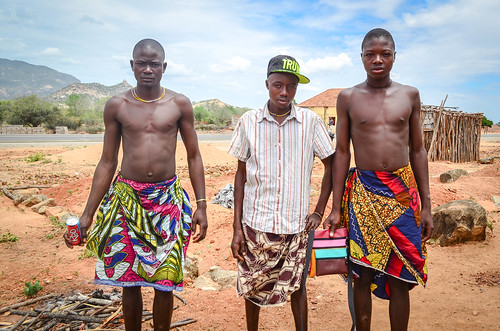

The next place is Munhino. It is the biggest village of the valley, and has the police and the administration. There is also a large roadside market full of food. And meat on the grill! I am not as hungry as before I found the donuts, but I’m still under-fed for cycling all day long.
By now, I have been used too much to people greeting me with “give me money“, while they don’t look especially in need. I don’t mind doing the same, so when this man with the Toyota pick-up says “hello” in English, I just answer “I’m hungry, do you buy me food?“. It works sometimes (very few times, I am always surprised), and this time I get to sit in the market with grilled lamb.
I feel good here, because I am usually the only “weird” one in the rural areas (and even in the not so rural places). When I stop in a market or in a small restaurant, I am always observed and gossipped about. The young with cellphones will try to take a snap of the White guy with a beard riding a strange bicycle. In Munhino’s market, it’s full of other “weird” people: some people are dressed entirely traditionally, with the loincloth and the machete, some others are like bad boys straight from a US rap video clip, and some are undecided, like this fat man wearing sunglasses, a loincloth, and a kid’s size Lil Wayne tee shirt letting his belly button and beer belly show. I exhibit my hair, a source of envy in the market. Some comment that White hair is different from Chinese hair.
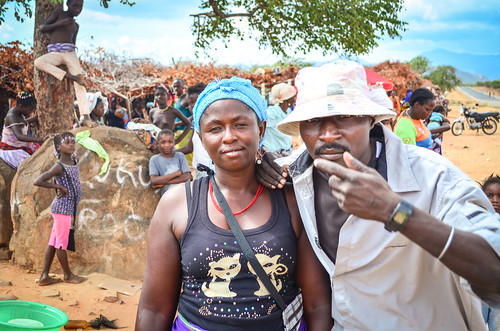
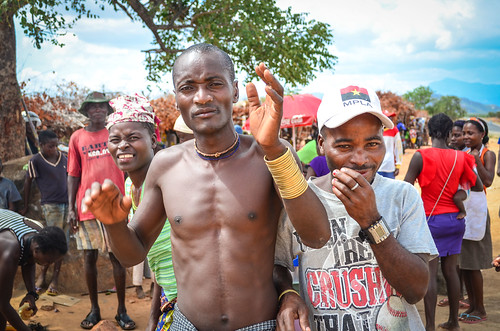
I witness Chinese walking on the road, alongside with topless Mucubals with gold rings on the ankles. Some women and babies have red powder around the neck. It is also quite special to ride the brand new tar with no traffic, not even motorbikes. There is still the new railway by my side. Very strange to have these traditional outfits and brand new infrastructure brought together. The scenery is still terrific, with cliffs and canyons on both sides.
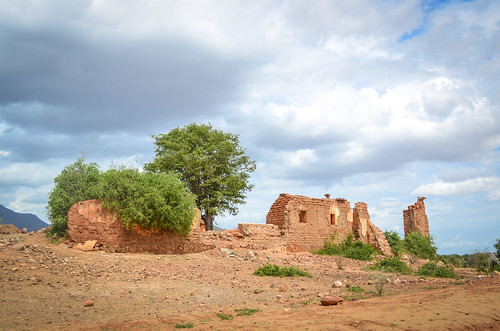
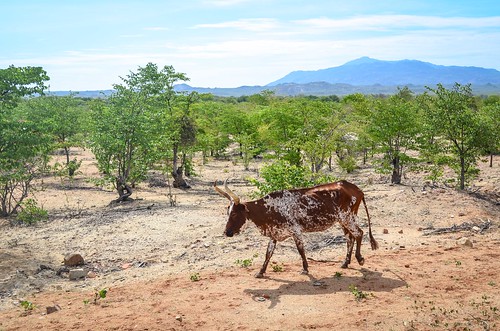
The difference of temperature is significant. Since Tundavala yesterday, I lost almost 2000 m in altitude. I empty my water bottles so quickly that I spend most of my time worrying about when I will be able to refill. There is no water pipe network, so I have to ask in villages who can give me water from his water tank.
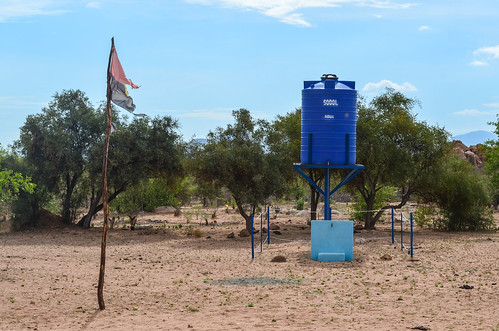
The Mucubal valley road ends at the T-junction of the “highway”. To my right, Namibe and the ocean. To my left, Lubango and Namibia. There is no road from Angola to Namibia along the coast. There is one from Namibe to Ruacana via the Iona NP, a stony gravel road with no villages, but everyone says it’s too bad and I’ll die of thirst if I venture there.
Now I have to cycle back up to the Huilá province. This is via the Serra da Leba road, the most scenic of Angola. I’m looking forward to it. A last water-refill and gazosa stop, where I am told that I can sell my hair for 200 USD, and where a man combines a loincloth with a tee-shirt of 50 Cent, and I start my way back on this loop around Lubango.
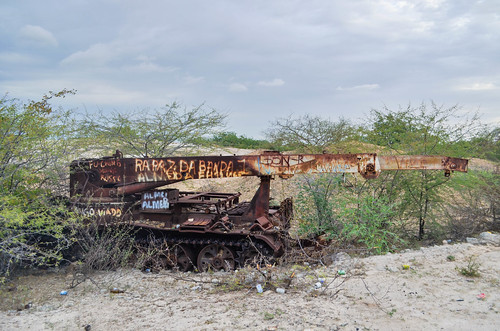

The road is much narrower than the previous one and has plenty traffic. There are convoys of trucks driven by Chinese. I camp at 600 m at the foot of the escarpment, under the full moon, facing the huge wall I will have to climb tomorrow.
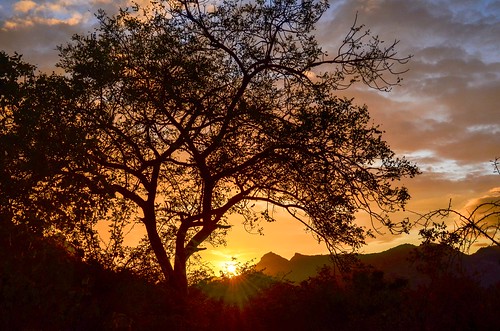
A good breakfast under the sunrise lighting up the Serra da Leba is not too much, considering I expect to spend my whole day cycling and pushing my bicycle uphill. It also feels right for a chain oiling and tensioning: things have to run smoothly.
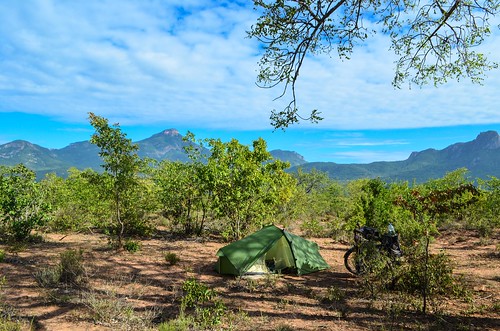
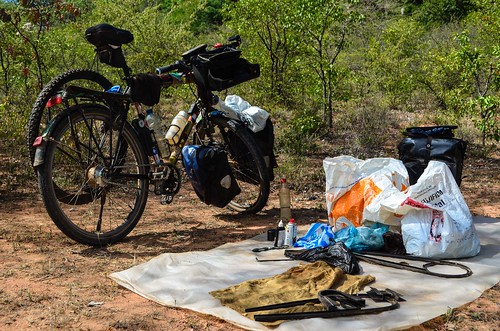
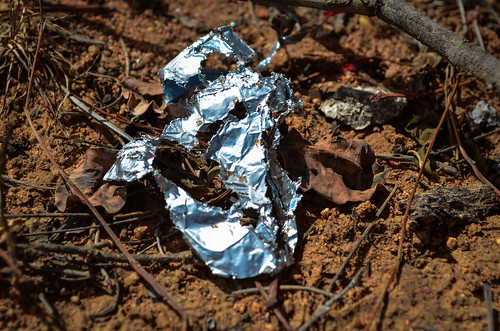
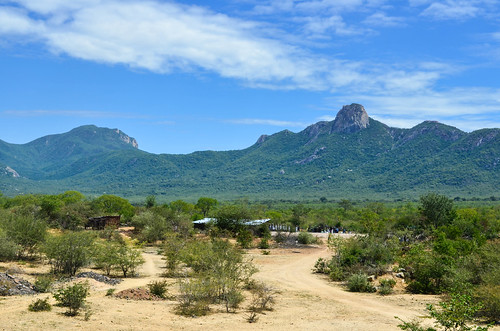
The plan is simple: follow the road and its hairpin bends until the top. From 600 m to 1800+ m of altitude.

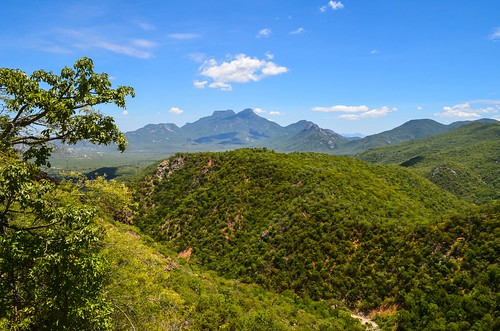
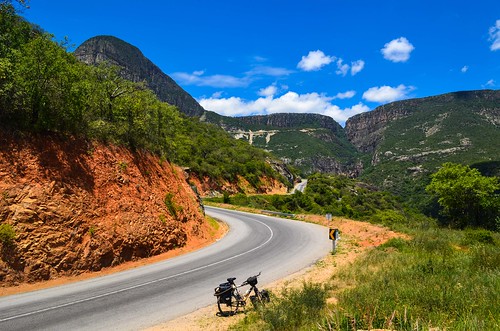
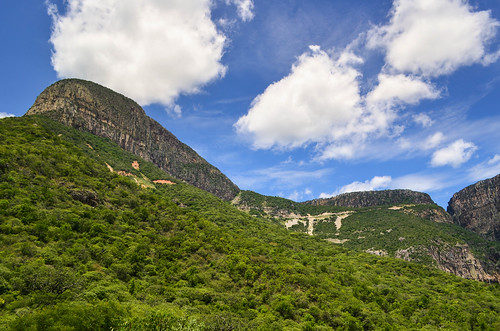

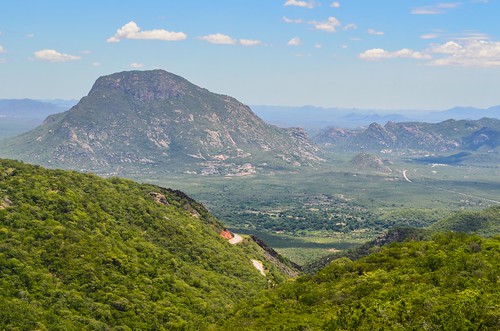

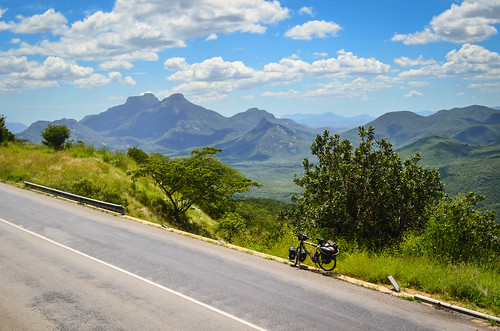
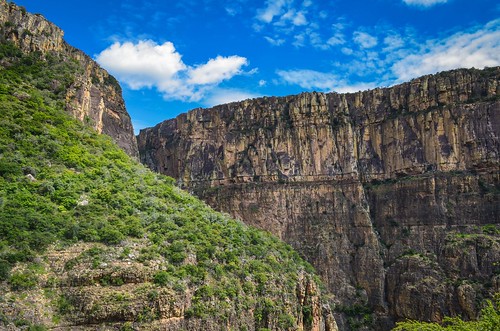
The road is in good condition, and truly spectacular. It’s one of the most beautiful ride ever. The weather is good, there is almost no traffic. The slope is never too steep and I never have to push. But some trucks struggle badly.
The Portuguese have designed two different routes for the railway and for the vehicles to reach Lubango from Namibe, both being very challenging. They were not short of engineering stimulus. Hundred years later, it is very impressive and beautiful.
Until one of the last turns, I had no clue how the road would climb the cliff. It actually gets into a gorge and snakes its way until the top.
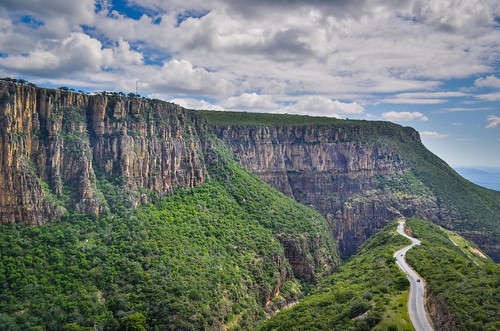
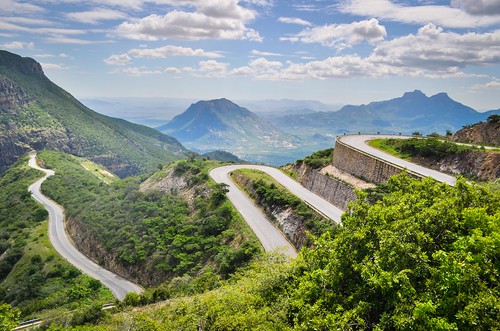
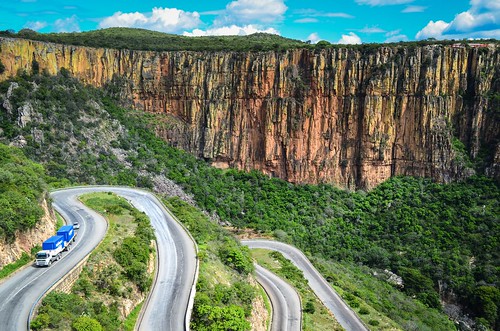
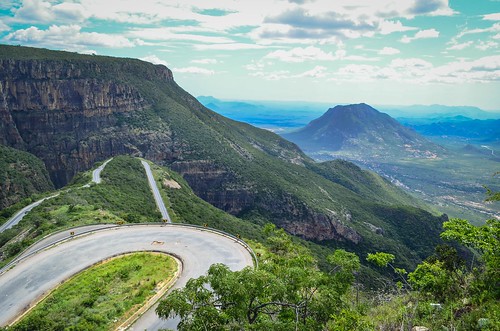
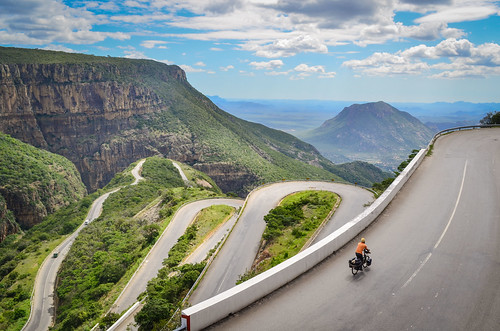
It took me more than three hours to cycle 20 km of pure ascent, but it was not too difficult, if I compare it to unmaintained dirt roads for 4×4 only I have taken before. I spent a lot of time shooting sequences for a video, but I’ll have motivation to edit it only once in Cape Town.
At the bottom of the Serra da Leba, I had one Coke, one Sprite, and left with little water. I thought I wouldn’t need to pull three liters of water up the road and find a small shop up there to refill me with Coca-Cocal. Taking 3 liters of water on a 1200 m vertical drop requires an energy of 36 kJ or 8.5 kcal. It’s 15 times less energy than what a 33cL Coca-cola can contains … not a wise choice.
Anyway, I’m very thirsty at the top and there’s no Coca-Cola shop. On the other hand, there is a small waterfall. Perfect for drinking and more …
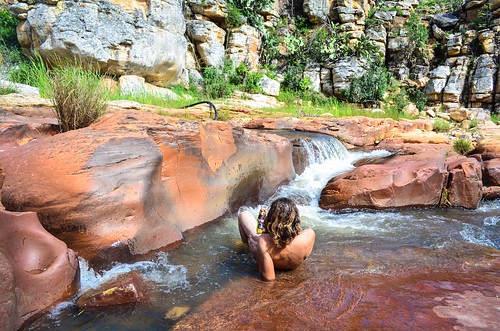
The water from the stream is not even cold. And much warmer than the showers at the catholic mission of Lubango, so I take this opportunity to treat myself with a shampoo.
Sometimes life is hard on the road, sometimes (but much less frequently) things go perfectly. From here to Humpata, the roadside is occupied by sellers of apples and pears. I have not eaten pears in ages, so 1 or 2 USD for a large basket looks like a perfect deal.
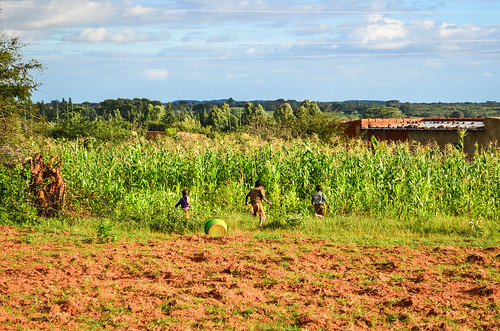
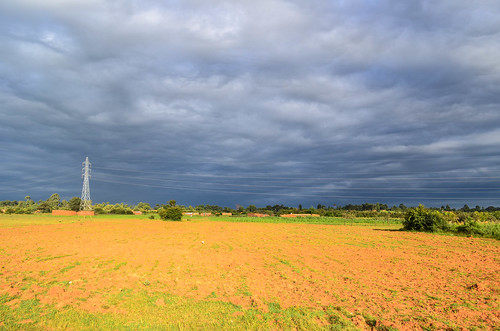
On this plateau, there are so many fields, good temperatures, and enough rain: the first settlers didn’t mistake when funding Lubango. It’s very similar to Europe. What if the Portuguese empire was selective and focused only on little paradises? They were not in Greenland or Mauritania, but Mozambique, Brazil, Cabo Verde, Goa, East Timor …
This is the end of my 4-day loop in and around Lubango. There’s no such thing as wasted time in Angola, everywhere is simply beautiful. From Humpata, I will take a small road that joins Chibia and then straight to Namibia!






je reste sans voix. Vos aventures sont alléchantes et font découvrir mon Afrique d’une façon très belle. Merci pour vos photos
JB ? tu ressembles à ton père.” Le terrible que rien n’arrête”. Encore bravo sans exclure la prudence jusqu’au bout.L’arrivée est proche. Vraiment félicitations de tous les cyclos de la Gironde et tout particulièrement BORDEAUX, ST AUBIN DE MEDOC ET ST MEDARD EN JALLES 33160. Daniel QUOINEAUD cyclo de 68 ANS.
Hello mon ami
Well done 😉
All going well?
A nice trip by Angola and now in the deep sud.
Bon voyage mon ami
obrigado, tudo muito bom para mi. Agora esteu fora da Angola na Namibia. Mi portugues se ha amelhorado un poucado sobre os caminos 🙂 C’était très chouette. J’ai préféré les gens du nord et les paysages du sud. Bon courage a cabinda!
SUPERBE
les lacets de l’Alpes d’Huez !
En effet, c’est comparable en dénivellé! Meme si y’a moins de lacets ici. Et moins de neige!
Fabulous. You’ve made us eager to visit Angola!
Not easy to travel there, but rewarding!
It’s indeed a blessed country when it comes to nature.I love the country too.